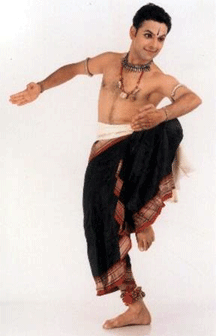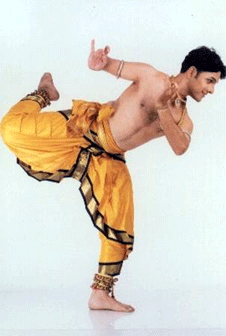Apr 18, 2025
Apr 18, 2025
Has control over one's senses Madhyama Wise It is interesting to note that Bharata gives vichakshana for Uttama characters and visharada for madhyama characters. So the uttama characters are supposed to be skilled to the extent that they have knowledge about it and the Madhyama characters are supposed to be proficient enough to make a professional use of it. Dr. Manmohan Ghosh also makes the same observation in his edited version of the Natyasastra. 1) Dhirodhata - Brave and haughty One wonders as to what the word dhira could mean. It could mean brave, courageous, firm, resolute etc. Whatever the word Dhira means, it is to identify the nayaka and highlight him in the play. Thus it is obvious from the definition that he does possess some special qualities and therefore the word dhira has been used to justify his uniqueness. Physical Acquired Psychological Bharata was a dramaturgist and he was aware that in a play, the friends of the hero act as intermediaries between the Nayaka and the Nayika. He lays down the various types of female messengers , the qualities needed for a female messenger, prohibitive actions of the same, proper time and place of meeting. He lays down the three types of women on the basis of their involvement with their lover. Interestingly Bharata also lays down methods to win back a woman's heart . He gives various types to please and appease the woman according to her nature. Catura - Clever There are other qualities mentioned for each of them, but it is varied reaction to the nayika's anger which distinguishes each of them. Thus the Catura Nayaka is clever because he knows how to win her back despite her anger. The uttama keeps his self-dignity intact by disassociating himself. The madhyama adopts the solution of eye for an eye and gets annoyed with the Nayika. The adhama is without any ego and thus may even fall at her feet, cry, lament or may try to flatter her consistently. The Samprrvrdhaka is of a foolish nature and thus is hardly bothered about his woman's anger.
 Bharata has categorized male and female characters into three types on the basis of their nature (Prakriti). The nature of a person could itself be divided into several categories. Bharata talks about the Nayaka in his chapter on Prakriti . Since the chapter is on Prakriti or the Nature of human beings or characters / patra-s. He begins by laying them into three main categories.
Bharata has categorized male and female characters into three types on the basis of their nature (Prakriti). The nature of a person could itself be divided into several categories. Bharata talks about the Nayaka in his chapter on Prakriti . Since the chapter is on Prakriti or the Nature of human beings or characters / patra-s. He begins by laying them into three main categories.
1) Uttama
2) Madhyama
3) Adhama
A comparative study is being made by the following table which will give a clear and a distinctive sketch of the three prakriti-s. As this chapter only talks about Nayaka , I am only taking into consideration the prakriti (nature) of the male / purusa patra-s / characters. The attributes which cannot be compared have been laid down separately and those which can be compared have been listed in the same line.
Before beginning with the grouping , I would like to highlight Abhinavagupta's concept of Guna-s which he decides into Sahaja and Ahara . Abhinavagupta states that the Guna-s which one is borne with are Sahaja Guna-s one which he acquires through experience as Ahara Guna-s.
Uttama
Intellectual
Nanasiplavichakshana
Dexterous
disposed to enjoy legitimately.
philanthropist
well-versed in various sastra-s
having depth of character
magnanimous
patient
munificent
Silpasastravisharada
Good in communication skills
Sweetness of manners
The adhama characters possess qualities contradictory to the uttama character in its entirety. Thus he neither possesses sahaja as well as ahara guna-s. In the characters of uttama variety, the sahaja guna-s score over the ahara guna-s, in the characters of madhyama variety the ahara guna-s exceed the sahaja guna-s.
Similar is the classification of the female characters. A significant point which I observed was that no where in the list of qualities of the superior female character, we find presence of intellect, skillful, proficient in arts etc. This itself highlights their importance from the point of view of the plot of the Sanskrit play.
Then Bharata talks about characters of mixed nature. Bharata does not include the main (hero or the heroine) under this section. He includes maid-servants, hermaphrodites (who has been specifically identified as a character of inferior kind) sakara and vita (attendants of the hero). Bharata does not include the characters of uttama or madhyama variety. It seems he wants the uttama and madhyama characters to be well-defined and not of ambiguous nature.
Then Bharata goes on to talk about Nayaka. The word Nayaka in rhetoric means the hero of a poetic composition (play or drama). In the Natyasastra, Nayaka has been defined as 'One who relieves himself from any contingency and triumphs over all hurdles and appears to be the protagonist amongst all the other male characters of the play.'
Then Bharata goes on to mention the four types of Nayaka. All the four nayaka types have been identified amongst the uttama and madhyama variety. They have been divided into the following:
2) Dhiralalita - Brave and sportive
3) Dhirodata - Brave and magnanimous
4) Dhiraprashanta - Brave and calm
 Indirectly Bharata has laid down the four primal positions in the order of social rankings. Bharata lays down that the Gods are Dhirodhatta , Kings are Dhiralalita , ministers are Dhirodatta and Brahmins and men of the business class are Dhiraprashanta. Bharata and Abhinavagupta do not talk about the attributes of these nayaka-s. Bharata talks about the nature of the characters in accordance of their status. Thus he lists the qualities of the king, leader of the army, chaplains and ministers, Secretaries, judges, wardens of princes and courtiers etc. But the qualities stated have no particular relation with the four types of Nayaka . The qualities laid down seem to be in relation to their status and the duties required to be preformed for that particular post. To cite an example: If a General is a Nayaka, he would be Dhirodatta. The guna-s mentioned are --- Good character, truthful, energetic, polite, is aware of the enemies activities, weaknesses and the proper time to march against him, has sufficient knowledge about the economics of a countries wealth, loyal to one's king , honored in his own clan etc. These do not justify as to why Bharata has thought that they should be of Dhirodatta type.
Indirectly Bharata has laid down the four primal positions in the order of social rankings. Bharata lays down that the Gods are Dhirodhatta , Kings are Dhiralalita , ministers are Dhirodatta and Brahmins and men of the business class are Dhiraprashanta. Bharata and Abhinavagupta do not talk about the attributes of these nayaka-s. Bharata talks about the nature of the characters in accordance of their status. Thus he lists the qualities of the king, leader of the army, chaplains and ministers, Secretaries, judges, wardens of princes and courtiers etc. But the qualities stated have no particular relation with the four types of Nayaka . The qualities laid down seem to be in relation to their status and the duties required to be preformed for that particular post. To cite an example: If a General is a Nayaka, he would be Dhirodatta. The guna-s mentioned are --- Good character, truthful, energetic, polite, is aware of the enemies activities, weaknesses and the proper time to march against him, has sufficient knowledge about the economics of a countries wealth, loyal to one's king , honored in his own clan etc. These do not justify as to why Bharata has thought that they should be of Dhirodatta type.
Thus there seems to be no detailed explanation about the four nayaka types. Probably plays already existed which had a clear character sketch about the four nayaka types.
Bharata talks in detail about the various types of nayaka on the basis ofvaisikopacara. The term vaisik means a person who associates oneself with the harlots (ganika-s). Bharata also means the same with an addition that he is also well versed in various arts. But Abhinavagupta makes more sense as he says that a man who is a skilled lover and knows the minute details about love making is a vaisika. Thus Bharata elaborates on all such qualities needed for a man to entice a woman, to keep a harmonious relationship with his partners etc. Bharata concentrates a lot on the appearance and behavioral aspect of a vaisika. He divides the qualities into three sections:
Bharata enumerates the superior, middling and inferior quality of women according their behavior with their lover/husband.
After this Bharata talks about the four stages he explicitly states the reaction of the woman to her co-wives which means it is presumed that the Nayaka is a polygamist or indulges in women out of wedlock. I feel Bharata expects the Nayaka to know all these details relating to a woman's psyche and physique to term him as vaisika.
Then comes the most significant division of the vaisika. He has been categorized into
1) Catura 2) Uttama 3) Madhyama 4) Adhama
Each of these given above reacts in a different manner when his wife /lover angry due to some reason and insults him.
Uttama - Superior
Madhyama - Middling
Adhama - Inferior
Sampravrrdhaka - Novice
Glimpses of the Nayaka types identified by post - Bharata authors in the chapter on Samanya Abhinaya of Natyasastra.
In the chapter of Samanya Abhinaya, Bharata mentions the behavior of a satha nayaka under the examples of four types of jealousy.
Vyalik - When the nayaka continues to visit his paramour despite the nayika's resistance and criticism it is Vyalik.
This particular nayaka is a drshtha nayaka because he is least bothered about the nayika's feelings and continues to be selfish and uncaring.
Then Bharat mentions the vyalik bhava in the nayika when the nayaka pleads and says, "I am your servant, You are beloved". A satha nayaka would obviously do that since he realizes his mistake thus overcome by guilt asks for the nayika's forgiveness.
Bharata then gives each and every minute detail for various possibilities of interaction between a khandita nayika and the nayaka (who would be a satha or dhrshtha). One can even differentiate between the way in which a satha and a dhrshtha nayaka would interact with the nayika.
Bharata then mentions the various terms which the nayika would address the nayaka on the basis of his character. It is here that we find Bharata may have identified the anukula, satha and drshtha nayaka-s.
The anukula nayaka identified by the post-bharata authors seems to be Priya. Bharata says he who does nothing undesirable, speaks nothing improper and always conducts himself uprightly is addressed by the Nayika as Priya. Bharata uses the word Dhrstha for defining the term dusila . If we closely observe the terms we find those qualities mentioned for Dusila, Duracara, Vama, Virupa, Nirlajja, Nisthur are but different shades of Dhrshtha nayaka mentioned by the post Bharata authors. Bharata also mentions Satha as a term which would be addressed by the Nayika when the Nayaka for his own purpose speaks sweet words and indulges in all misdoings behind her back. Therefore Bharata has not identified them as specific nayaka-s but he has definitely recognized their behavior and thus accommodated under a different section.
06-Feb-2006
More by : Parimal Phadke

|
Good summary, thank you. More chapter numbers and references would be useful. |